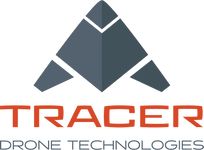Following these rules will keep you and your drone safe and will help keep the airspace available to everyone.
1. Register your drone, mark (PDF) it on the outside with the registration number, and carry proof of registration with you. https://faadronezone.faa.gov/#/
2. Fly your drone only for recreational purposes. Take the FAA Trust test
3. Fly your drone at or below 400 feet above the ground when in uncontrolled (Class G) airspace.
4. Obtain authorization before flying in controlled airspace (Class B, C, D, and E). You can obtain authorization in three ways:
1. LAANC
2. DroneZone
3. A written agreement with the FAA for fixed flying sites. For more information about fixed flying sites, contact us at UAShelp@faa.gov.
5. NOTE: Flying drones in certain airspace is not allowed. Classes of airspace and flying restrictions can be found on our B4UFLY app.
6. Keep your drone within your visual line of sight, or within the visual line-of-sight of a visual observer who is co-located (physically next to) and in direct communication with you.
7. Do not fly at night unless your drone has lighting that allows you to know its location and orientation at all times.
8. Give way to and do not interfere with any manned aircraft.
9. Never fly over any person or moving vehicle.
10. Never interfere with emergency response activities such as disaster relief, any type of accident response, law enforcement activities, firefighting, or hurricane recovery efforts.
11. Never fly your drone under the influence of drugs or alcohol. Many over-the-counter medications have side effects that could impact your ability to safely operate your drone.
12. Do not operate your drone in a careless or reckless manner.
Recreational flyers should know that if they intentionally violate any of these safety requirements, and/or operate in a careless or reckless manner, they could be liable for criminal and/or civil penalties.
For additional information please go to https://www.faa.gov/uas/


